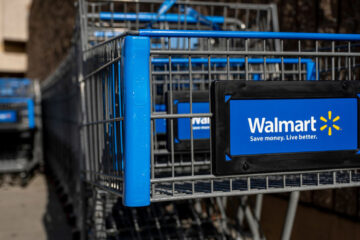Tesla (TSLA) has been facing an increasing number of challenges since 2025 began. Between the ongoing threat posed by the trade war and the anti-brand sentiment sparked by Elon Musk’s political affiliations, it has proven increasingly difficult for TSLA stock to garner sustainable momentum.
On April 22, Tesla reported Q1 earnings as both investors and consumers tuned in early to learn about Musk’s plans for the company’s future. The decision to focus on his Capitol Hill responsibilities rather than his companies has generated concern among even bullish analysts.
💵💰Don’t miss the move: Subscribe to TheStreet’s free daily newsletter 💰💵
On the call, Musk issued vague statements about his plans to scale back his work with the so-called Department of Government Efficiency (DOGE) and return to Tesla. While TSLA stock has responded well to the news, victory celebrations may be premature.
The company is still facing a long road to recovery, as evidenced by a new growth plan that many experts believe is ill-advised.
Anti-Tesla consumer sentiment has spiked in recent months but the company has other problems.
Image source: TheStreet/Getty
Tesla is trying to pull off something that experts think can’t be done
While much of the recent focus on Tesla has been on its 71% profit decline and 20% drop in automotive revenue, the company is also facing another key problem some investors may not be accounting for: its failure to effectively sell the Cybertruck.
Some photos published by Sherwood News recently showed a massive pileup of unsold Cybertrucks near Tesla’s facility in Austin, Texas. Other reports have revealed parking lots with similar buildup in locations such as Overland Park, Kansas.
Related: Shocking photos reveal Tesla’s potential ballooning concern
Reports indicate that since the Cybertruck’s release, an event preceded by years of hype, Tesla has delivered less than 50,000 to date. While some have speculated that its lack of popularity could be due to anti-Musk backlash, a look back shows that the Cybertruck pileup did not begin recently enough for that to be the only factor.
The clear takeaway from this trend is that demand for Tesla Cybertrucks isn’t keeping pace with supply. In response, Tesla has been quietly working on a solution that doesn’t seem to be working so far: rebranding the Cybertruck as the vehicle of the American working man.
According to Business Insider, Tesla wants its highly futuristic-looking vehicle to be seen as “less DeLorean, more Ford F-150.” But from the perspective of many experts, this idea is misguided and has little chance of success.
Electric vehicle (EV) industry veteran Joseph Nagle, who serves as Head of Corporate Strategy at Pando Electric, spoke to TheStreet about the reasons Tesla’s Cybertruck rebrand is likely to fail.
“On any job site, there is a near-religious attachment to different truck brands,” he states, reflecting on his background in the construction industry. “Very simply, it’s not a truck for the working man. It doesn’t feel like the tank that is the F-150. Those feel like they can take a beating and still keep going. The Cybertruck feels like a prop from a TV show.”
More Tesla News:
Elon Musk faces accusations from major tech rivalTesla insiders, including someone unexpected, are dumping sharesAnalyst issues scathing take on Elon Musk and Tesla stock
Nagle adds that the Cybertruck is unlikely to ever be seen as a vehicle for the typical working man. While he acknowledges Tesla may be able to sell the truck to younger consumers, he notes that they may not be able to afford it for some time, given the vehicle’s high price tag.
Tesla has a clear Cybertruck demand problem
Other leaders at the intersection of the automotive and technology sectors have takes similar to Nagel’s. Alex Black, Chief Marketing Officer at vehicle registry EpicVIN, shared with TheStreet that he believes Tesla’s decision says a lot about its Cybertruck demand problem.
Related: Elon Musk reveals plans to do exactly what he’s been warned against
“Labeling the Cybertruck a ‘working man’s truck’ reads more like a marketing ploy than a reflection of actual change,” he argues. “Most contractors or tradesmen aren’t spending $80K+ on a truck with yoke steering and a stainless steel exoskeleton that will scratch just by breathing on it the wrong way.”
In Black’s view, the consumer demographic that typically purchases a pickup truck is unlikely to ever embrace the Cybertruck, as these people tend to “prioritize utilitarian usefulness and reliability” over visual aesthetics.
Matt Voda, CEO of OptiMine Software, echoes Nagle’s argument that truck buyers may be too loyal to their brand of choice — be it Ford, Chevrolet, or Dodge — to switch. “Most truck buyers are extremely brand loyal, so it is even more difficult to get a truck buyer to switch brands at some point in their lives,” he notes.
Voda also claims that Tesla has invested almost no money in marketing over the past decade, which he sees as putting the company at a chronic disadvantage when it comes to competing with established truck makers.
Related: Veteran fund manager unveils eye-popping S&P 500 forecast


